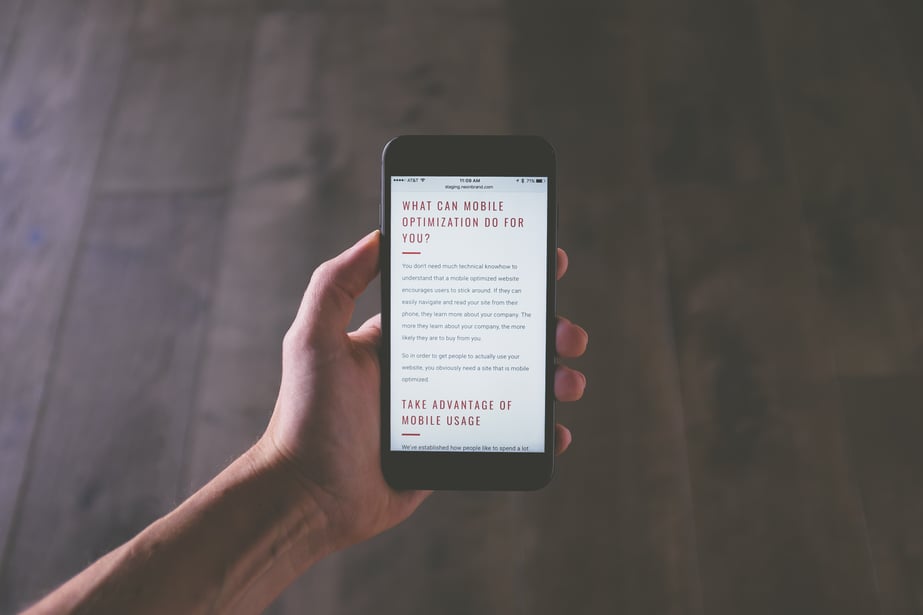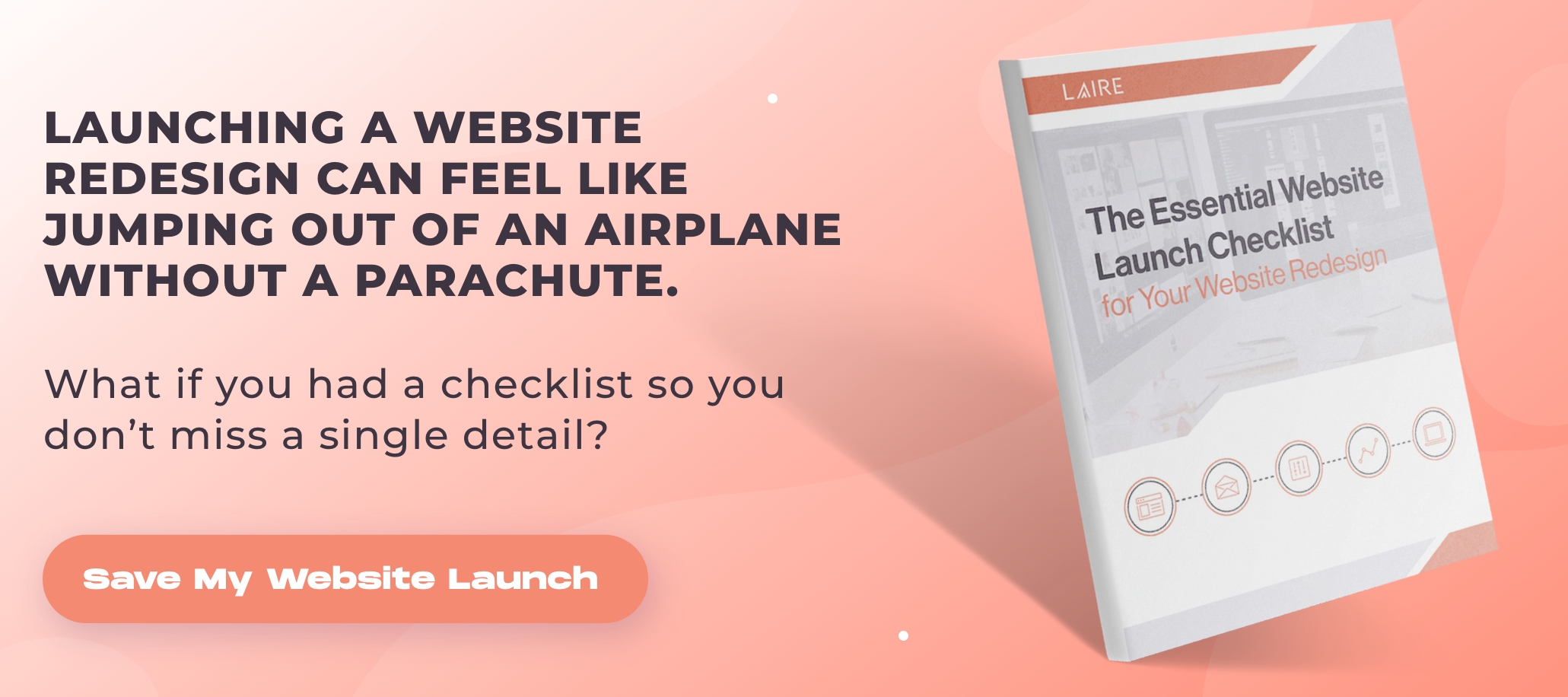Your website is one of your most valuable marketing tools. It’s where users can not only learn more about what your business does, but it can also give users a feel for your brand and more importantly, drive them to interact and take desired actions to turn them into a customer.
As websites age, it is easy for them to become outdated and in need of a redesign to reach optimal performance. As experts in website design and development, we are here to shed a little light on the subject and show you a few reasons you should redesign your website.
7 Reasons to Redesign Your Website
1. Better User Experience
What is User Experience Design?
User experience is a relatively new phenomenon that refers to the emotional experience a user gets when interacting with your site. Obviously, you want users to have a positive experience with your site, so your website design must be easy to use as well as reflect the quality of your services or products.
A site that is tough to navigate with slow load times can deter lead generation and cost you sales. In fact, 88% of online consumers are less likely to return to a site after a bad experience. If your website displays these characteristics, then it is time to redesign your site for a more enjoyable user experience that is in line with your users’ behaviors.
Things to Know About UX Design
It is important to note that user experience design is not a one size fits all approach. It doesn’t work in every situation because as humans we are all different. What works for one might not work so well for another. While we can design specific experiences and promote certain behaviors, it is impossible to predict the actual experience of a specific user.
User experience can also be difficult to gauge with traditional metrics such as page views and bounce rates. Tools like Heat-maps and even simple surveys can be beneficial in determining pain points in the user experience of your website.
While it is easy to get user experience mixed up with usability, the two are not the same. As we mentioned earlier, user experience is the feeling a user gets while using a system, while usability refers to efficiency and user-friendliness of the system. Usability plays a large part in user experience along with psychology, human tendencies and user-centered design principles.
2. Buyer Journey Optimization
The best websites make it easy for users to find solutions to the problems they are looking to fix. Understanding your target personas’ buyer journey is key to moving people down your sales funnel. This includes creating your buyer personas as well as knowing the research process they go through that leads to a purchase.
Your buyer personas give you much insight into your target audiences’ wants and needs while the buyers journey can help you create a website design with supporting content tailored toward each stage of the buying process. By meeting the needs of your users at every stage of the buyer’s journey, you are proving to them that you are a valuable and reliable source to turn to when they are ready to buy.
3. Convert More Leads
Your website may look nice and it may even offer valuable content to your target audience, but that doesn’t always mean it is driving sales.
If your current website is not converting prospects to leads or customers, then you may need to redesign the conversion paths on your website. Revisit your landing pages and calls-to-action (CTA) to see where they are missing the mark. Keep in mind that a simplistic design with clear language is generally best when encouraging users to take action on your website.
Creating Conversion Opportunities
You will need to create and implement conversion opportunities within your website to entice visitors to take action. Successful conversion opportunities show their value to users by helping them solve a problem or learn more details about something they are interested in. This is a great opportunity to showcase your expertise and be helpful to your audience.
For instance, content pieces such as white-papers, ebooks product spec sheets, etc. are great tools to offer visitors in exchange for their contact information. Effective CTAs and persuasive language are key in this area, so you may want to craft and test out a few different versions to see which performs best.
4. Improve SEO Performance
Your website should not only be optimized for lead conversion, but for SEO as well. Search engine optimization is key in driving organic traffic to your website.
Your site must be laid out in a way that is easy for search engines to crawl and include the right keyword strategy so users searching for those terms are led to your site.
If your website structure is designed in a tedious and complex way, it will not rank high enough to drive traffic. When laying out a new structure for your site, be sure to identify and clean up bad links as it can lead to SEO penalizations and decreased rankings.
5. Re-Align Your Website with Marketing Goals
As your business grows, so do your marketing and sales goals. It is important for your website to reflect the company goals and objectives even as they evolve. Be sure to analyze your site after making a new goal or altering a current one to make necessary edits to support your objectives.
Even if you haven’t set any new goals lately, take some time to monitor your site to ensure goals are being met, and if not it may be time to update.
6. Add Responsive Design for Mobile
With so much online traffic coming from mobile devices in today’s time, making sure your website is responsive on mobile devices should be a no brainer.
Websites that are not mobile responsive are missing a large segment of their audience and can also be viewed as outdated and behind the times.

This goes back to user experience as mobile-friendly website design is essential in giving those using their mobile devices a good experience. This includes responsive image sizes, resolutions, and scripting capabilities that will change as a user switches to a mobile interface. The website should also automatically respond and adjust depending on what device the user is using, eliminating the need to create a different design for each new device on the market.
7. Update Branding
As an extension of your business, the look and feel of your website should represent your brand. If you have recently undergone a rebrand, you should update your website to reflect these changes. This not only includes updating colors and adding a new logo but also performing a content audit to ensure the articles on your site are reflective of your brand voice.
Website Redesign Tips
Now that you know the importance of website redesigns and the situations that call for them, it’s time to get started! Check out our website redesign checklist for a step-by-step guide to your redesign. Short on time? Then here are a few quick tips to keep in mind when updating your web design.
- Audit your current site to better gauge what can be repurposed versus what needs to built from scratch or redone.
- Gather inspiration by checking out other brands’ sites, especially competitors.
- Review your brand guidelines and styles to ensure a consistent look.
- Utilize analytics software like Hotjar to understand better layout practices and optimal placements for your website.
- Focus more on creating remarkable content that attracts and converts than a unique design.
- Test out landing pages and conversion points to gain better insights when redesigning.
- If you don’t have one, add a blog to your site to build SEO.
- Look at your website from a user point-of-view and determine potential pain points in your current web design.
- Experiment with different layouts and optimization techniques and gather data to gauge performance.
Consult a Professional
Redesigning a website is no small feat and it is wise to consult with different specialists when giving your site a makeover. Our team consists of experts in all aspects of web design, from graphic design to SEO, so contact us today if your website needs a little help.


